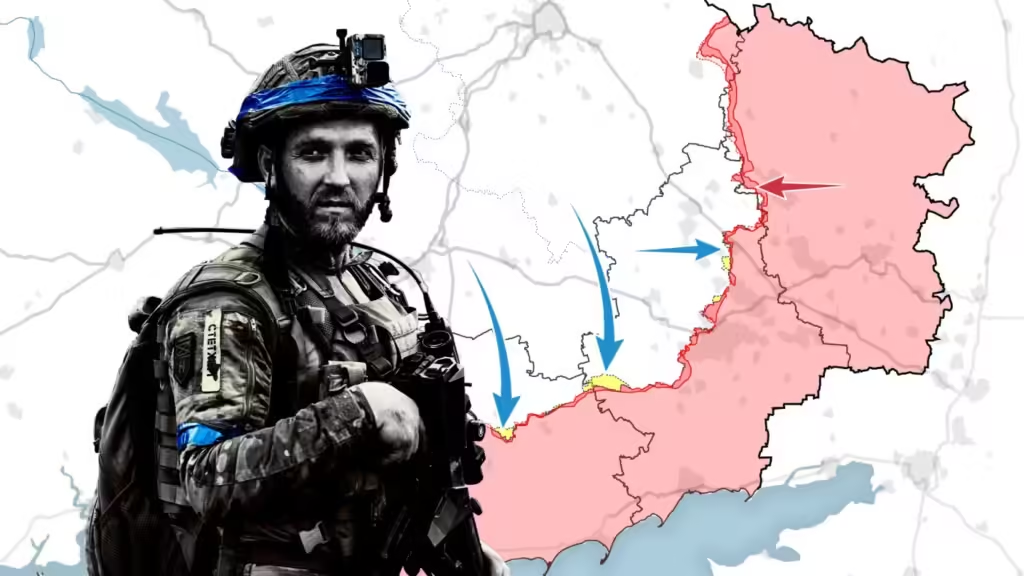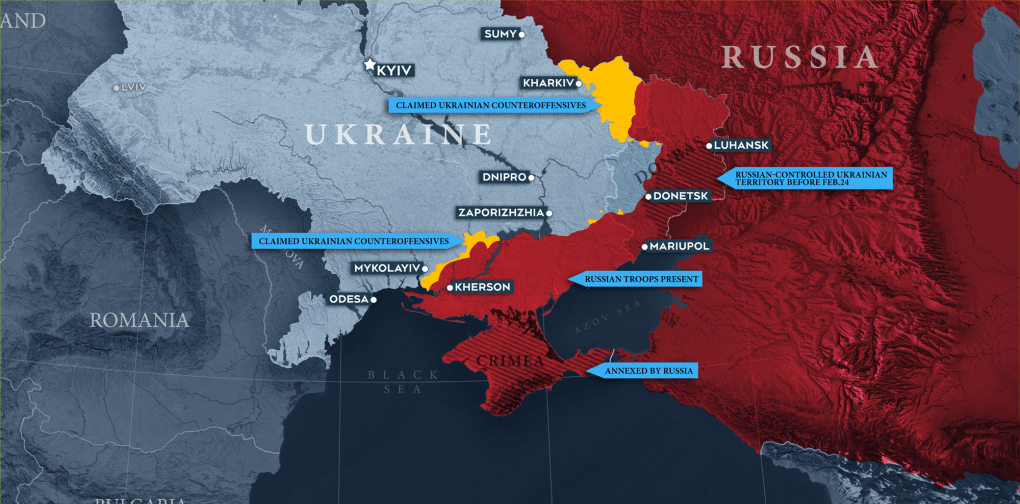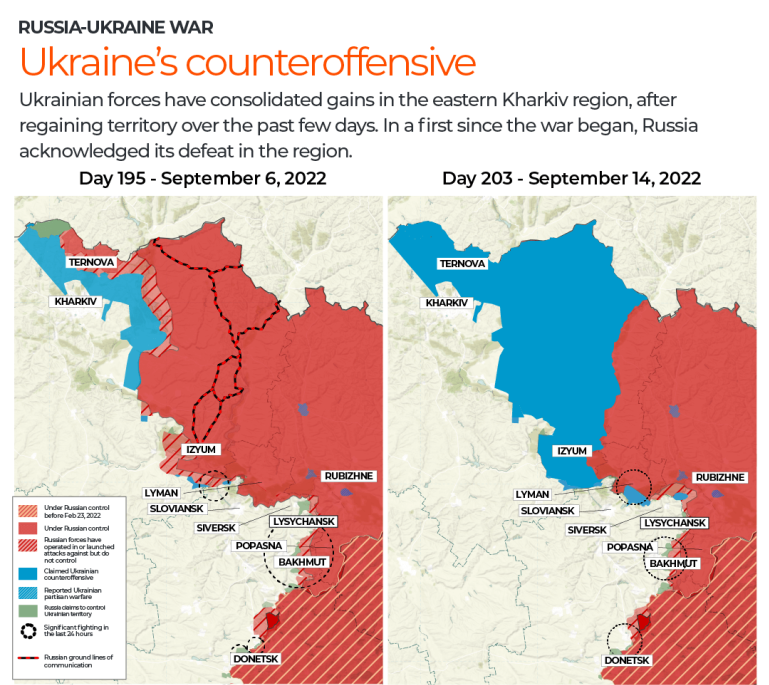How Much Territory Did Ukraine Recapture?
Introduction
The territorial integrity of Ukraine has been a focal point of international attention due to the conflict that erupted in 2014. Over the years, the situation has seen significant developments, including attempts by Ukraine to reclaim areas lost to separatist forces and foreign intervention. Understanding how much territory Ukraine has recaptured provides critical insights into the current geopolitical landscape and the ongoing conflict. This article delves into the extent of territory regained by Ukraine, the strategic maneuvers involved, and the implications for regional stability.
Historical Context
The Initial Conflict
The conflict in Ukraine began in 2014 following the Euromaidan protests, which led to the ousting of President Viktor Yanukovych. Subsequently, Russia annexed Crimea, and pro-Russian separatists declared independence in the Donetsk and Luhansk regions, leading to intense fighting and a significant loss of Ukrainian territory. The Minsk Agreements aimed to establish a ceasefire, but violations were frequent, and hostilities continued.
The annexation of Crimea by Russia in March 2014 was a major turning point, as it not only marked a significant territorial loss for Ukraine but also signaled a broader geopolitical struggle. The subsequent conflict in the Donbas region, where separatists in Donetsk and Luhansk declared independence, escalated into a full-scale war. The Ukrainian military, initially ill-prepared and under-equipped, faced a formidable challenge from well-armed separatist forces allegedly supported by Russia. Despite international condemnation and sanctions imposed on Russia, the conflict continued to rage, resulting in thousands of casualties and widespread destruction.
The Impact of Annexation
The annexation of Crimea by Russia and the declaration of independence by separatists in Donetsk and Luhansk drastically altered the territorial landscape of Ukraine. These events not only led to the loss of strategic regions but also sparked a protracted conflict that has resulted in thousands of deaths and displaced populations. The international community’s response, including sanctions on Russia, has also shaped the ongoing conflict dynamics.
The annexation of Crimea had significant strategic implications, given the region’s importance as a naval base and economic potential. For Ukraine, the loss of Crimea meant not only a territorial setback but also a blow to national pride and sovereignty. The subsequent declaration of independence by separatists in Donetsk and Luhansk further compounded Ukraine’s territorial woes, effectively splitting the country and creating a de facto partition. The international community’s response, including economic sanctions on Russia and diplomatic efforts to mediate the conflict, has had mixed success. While sanctions have put economic pressure on Russia, they have not yet resolved the conflict, which continues to smolder with periodic escalations.
Military Efforts to Reclaim Territory
Initial Military Response
Ukraine’s initial military response was marked by attempts to regain control of lost territories through direct military engagement. Despite some successes, these efforts were met with stiff resistance from well-armed separatist forces and, at times, direct or indirect support from Russia. The conflict saw heavy fighting in urban areas, leading to significant destruction and humanitarian crises.
In the early stages of the conflict, the Ukrainian military struggled to adapt to the realities of modern warfare. The initial attempts to reclaim territory were characterized by conventional military tactics, which were often ill-suited to guerilla warfare and urban combat employed by separatist forces. Cities like Donetsk and Luhansk became battlegrounds, with both sides engaging in fierce street-to-street fighting. The Ukrainian military faced significant challenges, including shortages of equipment, lack of coordination, and low morale. Despite these hurdles, Ukraine managed to reclaim some territory, but the gains were often temporary, and the cost in terms of human lives and infrastructure was high.
Key Battles and Strategic Wins
Over the years, Ukraine has managed to reclaim several key areas through a combination of military offensives and strategic negotiations. For instance, the recapture of the town of Sloviansk in July 2014 marked a significant turning point, boosting the morale of Ukrainian forces. Subsequent operations focused on regaining control of critical infrastructure and transportation hubs, which were essential for sustaining military logistics and civilian supplies.
The battle for Sloviansk was a pivotal moment in the conflict. The town had been a stronghold for separatist forces, and its recapture by Ukrainian forces demonstrated that the government could achieve significant victories. This success was followed by operations to secure other strategic locations, including the airport in Donetsk and key rail junctions. These victories were not just about reclaiming territory but also about disrupting the supply lines and communication networks of the separatists. Each reclaimed area allowed the Ukrainian government to reassert control, restore governance, and begin the process of rebuilding war-torn communities.
Use of Modern Warfare Tactics
Ukraine’s military strategies have evolved to incorporate modern warfare tactics, including the use of drones for surveillance, precision strikes, and cyber warfare. These tactics have enabled more effective targeting of separatist strongholds and minimized civilian casualties. International military aid, particularly from NATO countries, has bolstered Ukraine’s capabilities, providing advanced weaponry and training.
The incorporation of modern warfare tactics has been a game-changer for Ukraine. Drones have provided real-time intelligence, allowing for more precise targeting and reducing collateral damage. Cyber warfare capabilities have been developed to disrupt separatist communications and gather intelligence. The training and equipment provided by NATO countries have significantly enhanced the effectiveness of Ukrainian forces. This includes advanced weaponry such as anti-tank missiles, electronic warfare equipment, and secure communication systems. These improvements have not only helped Ukraine reclaim territory but also bolstered its defensive capabilities, making it more difficult for separatist forces to launch successful offensives.
How Much Territory Did ISIS Control? Understanding Its Rise & Decline
Diplomatic and Political Efforts
Minsk Agreements
The Minsk agreements, signed in 2014 and 2015, were pivotal in establishing a framework for ceasefire and political resolution. While the agreements have been violated multiple times, they provided a basis for international diplomatic efforts aimed at resolving the conflict. The role of the Organization for Security and Co-operation in Europe (OSCE) in monitoring the ceasefire and facilitating dialogue has been crucial.
The Minsk agreements represent a significant diplomatic effort to bring about peace in Ukraine. The agreements called for an immediate ceasefire, withdrawal of heavy weapons, and decentralization of power to grant more autonomy to the Donetsk and Luhansk regions. However, the implementation has been fraught with challenges. Ceasefire violations have been frequent, and political disagreements have hampered progress. Despite these setbacks, the Minsk agreements remain a crucial framework for dialogue and have helped to prevent the conflict from escalating into a full-scale war. The OSCE’s role in monitoring and reporting ceasefire violations has been vital in maintaining a degree of accountability and transparency in the conflict.
International Support and Sanctions
International support for Ukraine has been substantial, with economic sanctions on Russia and military aid to Ukraine forming the backbone of these efforts. Countries such as the United States, Canada, and members of the European Union have provided financial assistance, non-lethal military equipment, and lethal aid. Sanctions on Russia have targeted key sectors, including energy and finance, aiming to pressure the Kremlin into complying with international law.
The international community’s support for Ukraine has been multifaceted. Economic sanctions on Russia have targeted its energy, finance, and defense sectors, aiming to cripple its ability to support separatist forces. Military aid to Ukraine has included both lethal and non-lethal assistance. The United States has provided Javelin anti-tank missiles, which have been crucial in countering armored assaults by separatist forces. European countries have contributed financial aid and non-lethal equipment such as medical supplies and protective gear. This international support has not only bolstered Ukraine’s military capabilities but also provided essential humanitarian aid to alleviate the suffering of civilians caught in the conflict.
Internal Political Reforms
Ukraine’s internal political reforms have also played a role in strengthening its position. Efforts to combat corruption, strengthen democratic institutions, and integrate more closely with European structures have been crucial in garnering international support and building a resilient state capable of withstanding external pressures. These reforms have also contributed to improving the efficiency and accountability of the military and other state institutions.
The internal reforms undertaken by Ukraine have been crucial in strengthening its resilience against external pressures. Anti-corruption measures have been a key focus, with the establishment of new institutions like the National Anti-Corruption Bureau. Judicial reforms have aimed to enhance the independence and efficiency of the judiciary, ensuring fair trials and accountability. Efforts to strengthen democratic institutions have included electoral reforms, decentralization of power, and increased transparency in government operations. These reforms have not only helped to build a more robust state but also attracted international support by demonstrating Ukraine’s commitment to democratic principles and good governance.
Humanitarian Impact
Displacement and Refugee Crisis
The conflict has led to a significant humanitarian crisis, with millions of people displaced from their homes. The United Nations High Commissioner for Refugees (UNHCR) has documented the plight of these internally displaced persons (IDPs) and refugees, highlighting the need for sustained humanitarian assistance. Efforts to provide shelter, medical aid, and education for displaced children have been ongoing, but challenges remain due to the scale of displacement and ongoing hostilities.
The displacement crisis resulting from the conflict in Ukraine is one of the most significant humanitarian challenges in Europe. Millions of people have been forced to flee their homes, seeking refuge in other parts of Ukraine or neighboring countries. The UNHCR and other international organizations have been providing essential aid, including temporary shelters, food, medical care, and psychosocial support. Education for displaced children has been a particular focus, with efforts to ensure they continue their studies despite the disruption.
Current Territorial Control
Areas Reclaimed by Ukraine
Ukraine has successfully reclaimed several key areas, though the extent of recaptured territory fluctuates with the dynamics of the conflict. Towns such as Sloviansk and Kramatorsk, once under separatist control, are now back under Ukrainian administration. The strategic recapture of these areas has been vital for regaining control over transportation routes and rebuilding local governance structures.
Ongoing Conflict Zones
Despite significant gains, several areas remain contested, with ongoing skirmishes and artillery exchanges. The front lines are characterized by a mix of entrenched positions and mobile warfare, with neither side able to secure a decisive victory. Regions such as Donetsk and Luhansk continue to see frequent clashes, with both sides vying for control over key territories.
Impact on Local Populations
The local populations in reclaimed areas face numerous challenges, including rebuilding homes, re-establishing businesses, and dealing with the psychological trauma of conflict. Efforts to restore public services, such as healthcare and education, are ongoing but hampered by resource constraints and security concerns. Community resilience and international support are crucial for the recovery and stabilization of these areas.
The Role of the International Community
NATO and EU Support
NATO and the European Union have played significant roles in supporting Ukraine through financial aid, military training, and political backing. NATO’s assistance has included the provision of non-lethal and lethal aid, while the EU has focused on economic support and sanctions against Russia. These international efforts have been pivotal in bolstering Ukraine’s defense capabilities and maintaining pressure on Russia.
Humanitarian Aid
International humanitarian organizations, including the Red Cross and various UN agencies, have been active in providing aid to those affected by the conflict. This aid includes food, medical supplies, and psychological support for trauma victims. Coordination between international and local organizations is essential to ensuring effective delivery of assistance and addressing the urgent needs of the affected populations.
Diplomatic Pressure on Russia
Diplomatic efforts to resolve the conflict have involved continuous pressure on Russia to comply with international agreements and withdraw support for separatist forces. Sanctions have been a key tool in these efforts, targeting individuals and entities involved in the conflict. Diplomatic channels remain open, with ongoing negotiations aimed at finding a peaceful resolution and ensuring the sovereignty and territorial integrity of Ukraine.
Future Prospects
Peace Negotiations
The future of Ukraine’s territorial integrity hinges on successful peace negotiations. Efforts to renew and strengthen the Minsk agreements or develop new frameworks for peace are crucial. The involvement of international mediators, including the OSCE and the United Nations, is essential for facilitating dialogue and ensuring that all parties adhere to agreed-upon terms.
Reconstruction and Development
Reconstruction of war-torn areas is a priority for Ukraine, requiring substantial financial investment and international support. Rebuilding infrastructure, homes, and public services will be essential for restoring normalcy and fostering economic development. Long-term planning and sustainable development initiatives are necessary to address the root causes of conflict and prevent future instability.
Long-Term Security
Ensuring long-term security involves not only military measures but also addressing underlying social and economic issues. Strengthening democratic institutions, promoting inclusive governance, and fostering economic opportunities are vital for creating a stable and prosperous Ukraine. Continued international support and cooperation are essential for achieving these goals and ensuring that Ukraine can maintain its territorial integrity and sovereignty.
Conclusion
The recapture of territory by Ukraine amidst an ongoing conflict underscores the resilience and determination of the Ukrainian people and their government. While significant challenges remain, the progress made thus far highlights the importance of strategic military efforts, international support, and diplomatic negotiations in reclaiming and stabilizing lost territories. As Ukraine continues to navigate this complex landscape, the support of the international community and sustained efforts toward peace and reconstruction will be crucial for achieving lasting stability and prosperity.
FAQs about Ukraine’s Recaptured Territory
1. How much territory did Ukraine recapture during the conflict?
Ukraine has recaptured several key areas, though the exact amount of territory fluctuates with ongoing hostilities. Notable reclaimed regions include Sloviansk, Kramatorsk, and parts of Donetsk and Luhansk.
2. What strategies did Ukraine use to reclaim territory?
Ukraine employed a combination of military offensives, modern warfare tactics, and strategic negotiations. The use of drones, cyber warfare, and international military aid were crucial in these efforts.
3. How has the international community supported Ukraine?
The international community has supported Ukraine through economic sanctions on Russia, military aid, financial assistance, and diplomatic efforts. Organizations like NATO, the EU, and the UN have played key roles in these efforts.
4. What are the humanitarian impacts of the conflict?
The conflict has led to significant displacement, human rights violations, and economic decline. Humanitarian aid efforts focus on providing food, medical care, shelter, and psychological support to affected populations.
5. What are the prospects for peace in Ukraine?
Prospects for peace depend on successful negotiations, international mediation, and comprehensive reconstruction efforts. Ensuring long-term security and stability will require addressing underlying social and economic issues and continued international support.



